When the weather starts to cool down, it’s time to start thinking about how you will keep your pool or RV from freezing. There are a few different options available, but one of the most popular is using antifreeze. In this blog post, we will compare pool antifreeze vs. RV antifreeze and help you decide which one is best for you!
Before the onset of cold weather, the outdoor stationary pool must be prepared for winterization, which will greatly simplify the start-up with the onset of the swimming season. You can independently preserve the pool for the winter period, following the instructions.
Table of Contents
Preparing the pool for winter
If the outdoor pool has a heating system and is used all year round, winter conservation is not required.
It is recommended to leave water in the pool for conservation for the winter. At sub-zero temperatures, deformation of the soil occurs, excessive pressure is placed on the empty bowl, as a result of which it can be damaged. The remaining water in the pool will compensate for the excess soil pressure.
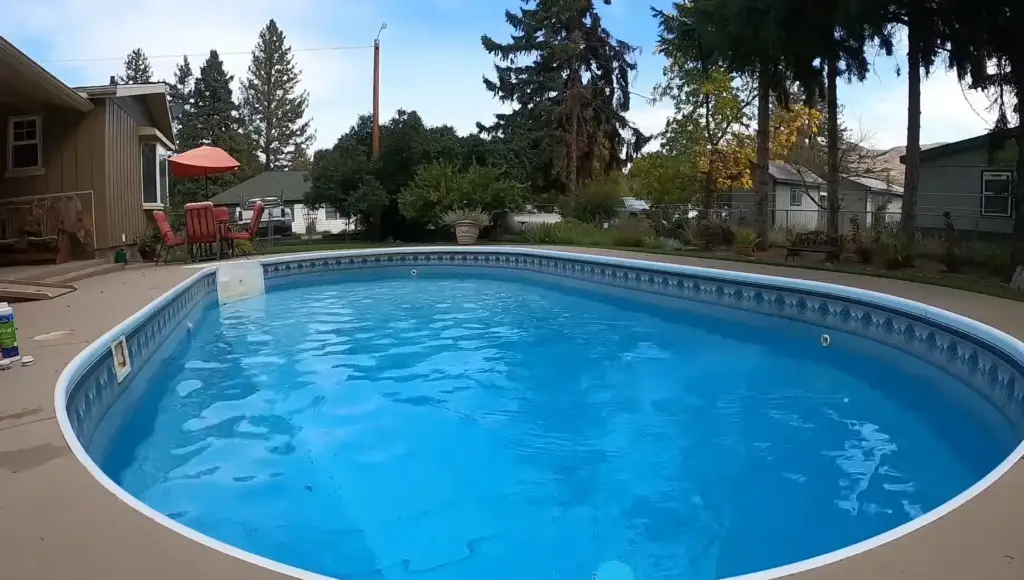
Two ways to pre-prepare the pool for conservation for the winter:
Conservation without draining water.
With preliminary draining and refilling of the pool with water.
The second method is more time-consuming, but also more effective, so we will describe it in more detail. [1]
Winter preservation of the pool with water drainage
- Drain the water completely before storing the pool for the winter.
- With the help of brushes for the bottom, walls and corners, as well as special chemicals for cleaning the pool bowl, carefully remove all dirt from the walls and bottom. Use pool chemicals that are suitable for the type of bowl coating, never use household chemicals. It causes turbidity of water, foaming and rapid growth of algae. After cleaning, thoroughly rinse the surfaces to remove the detergent, pump out the dirty water.
- While the bowl of the pool is empty, disassemble the equipment that can be damaged by low temperatures during conservation: built-in pool walls, lights, attached equipment (stairs, handrails, skimmer baskets).
- Fill the pool with water and start the filter according to the following scheme: backwash, compaction mode (10-15 sec), filtration.
- Check the pH level using a test kit: it should be between 7.4 and 7.6. If necessary, adjust the readings by adding chemicals to adjust the pH − pH-plus or pH-minus. After using the chemical, check the pH level again.
- Shock the pool using granular shock-chlorine chemistry. This procedure is recommended to be carried out in the evening, as chlorine disintegrates under the influence of ultraviolet light. After applying shock chlorine, leave it overnight while leaving the filter running. Do a test in the morning, checking the chlorine level: it should return to 1-3 ppm.
- With normal chlorine readings, add algaecide to the water and let the pump run for another 2-3 hours.
- After the basic treatment of water with chemicals for the pool, it is necessary to add the so-called winter chemistry for conservation, which will prevent the sedimentation of lime and undissolved salts from the melting ice on the bottom and walls of the pool.The use of this chemistry will greatly simplify the cleaning of the pool after winter preservation. After applying the winter chemical, leave the pump running for at least 12 hours so that the product passes through the pipe system. During filtration, check the pH level and bring it to normal.
- Install a winter float to compensate for the pressure of the ice monolith in the pool.
- Lower the water level 7-10 cm below the skimmer. When using any protective coating for conservation, it is not recommended to lower the water below 45 cm of the upper edge of the pool.
- Turn off and dismantle all hydraulic system components, free them from remaining water. In no case do not add antifreeze to them. It is better to blow out all equipment and pipes using an air compressor or a powerful vacuum cleaner. After that, use plugs to prevent water from flowing back into the return pipes. The filter is removed completely, washed and dried, after which it is taken to a warm place for storage.
- Cover the pool for preservation for the winter with an awning or a hard surface. Preservation of the pool for the winter without first draining the water is practically no different from the previous method, except that the bottom and walls of the pool will be cleaned without special chemicals when the pool is full. This method is less time-consuming, but more effort will be required in the spring to deconserve the pool after wintering.
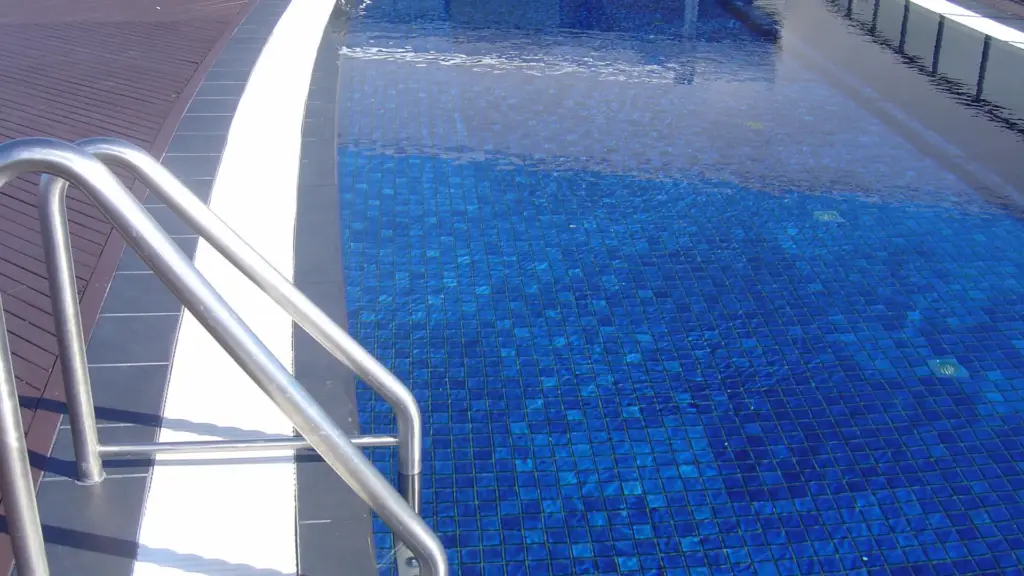
What is pool antifreeze?
There are two main types of pool antifreeze: glycol-based and propylene glycol-based. Glycol-based antifreeze is the most common type and is typically used in pools that are made from concrete or fiberglass. Propylene glycol-based antifreeze is less common, but it is often used in pools that are made from plastic or metal, as it can help to prevent corrosion.
When choosing a pool antifreeze, it is important to make sure that you choose one that is compatible with the material of your pool. For example, if you have a concrete pool, you should use a glycol-based antifreeze, as this will prevent the concrete from being damaged by the chemicals in the antifreeze. Similarly, if you have a plastic or metal pool, you should use a propylene glycol-based antifreeze to prevent corrosion.
It is also important to make sure that you follow the directions on the packaging carefully, as using too much or too little antifreeze can be dangerous.
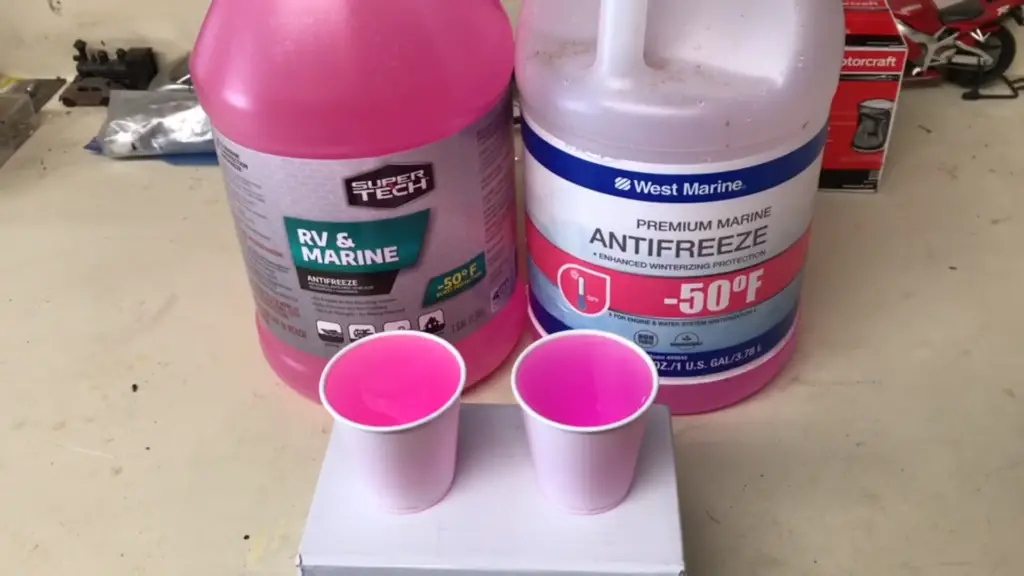
Once you have added the pool antifreeze, you should run your pool pump for at least 24 hours to make sure that the antifreeze is evenly distributed throughout the water. After that, you can turn off the pump and allow the pool to sit until it is time to use it again. [2]
What is RV Antifreeze?
It’s also used to keep your water tank from sweating and your holding tanks from freezing. Pool antifreeze, on the other hand, is made of ethylene glycol and is poisonous if ingested. So, if you’re using pool antifreeze in your RV, be sure to keep it out of reach of children and pets.RV antifreeze typically comes in two different concentrations: 50% and 100%. The 50% concentration is sufficient for most applications, but the 100% concentration provides extra protection against freezing temperatures. If you’re unsure which concentration to use, consult your RV owner’s manual or the manufacturer of your RV plumbing.
When using RV antifreeze, it’s important to follow the manufacturer’s instructions for mixing and diluting the solution. In general, you’ll want to mix one part antifreeze with two parts water. For example, if you’re using a gallon of RV antifreeze, you’ll need two gallons of water. Once diluted, pour the solution into your fresh water tank and run the pumps and faucets until the antifreeze comes out. Be sure to empty all holding tanks before adding the antifreeze solution.
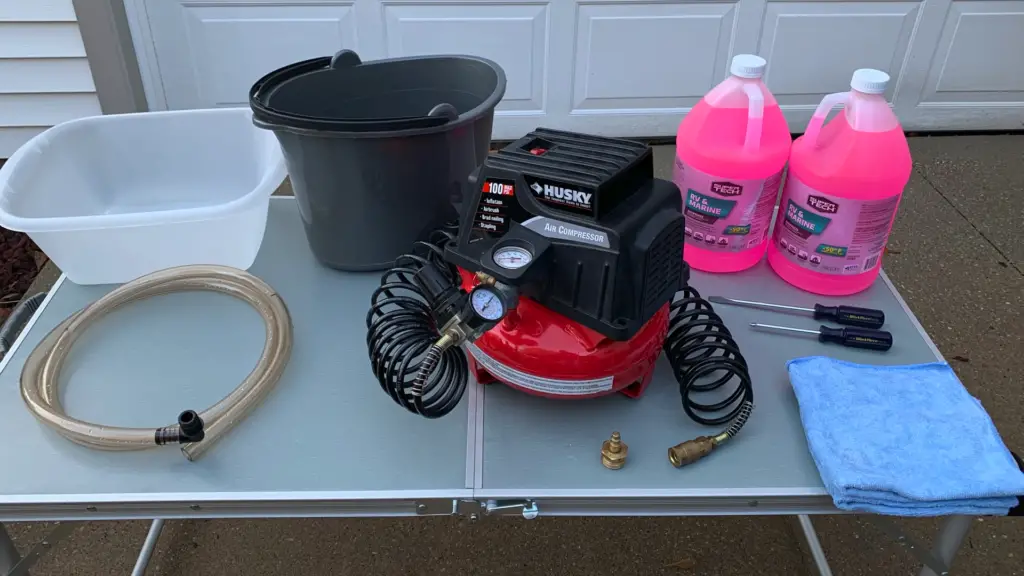
RV antifreeze is an important part of winterizing your RV. By using the correct solution and following the manufacturer’s instructions, you can help protect your RV plumbing from freezing temperatures and costly repairs. [3]
Is It Safe to Swim with Antifreeze in the Water?
The simple answer is no. Antifreeze is poisonous if ingested, and even if you don’t drink it, coming into contact with it can cause skin irritation. If you have open cuts or sores, antifreeze can cause burns.
So what should you do if you accidentally spill some antifreeze in your pool? The best course of action is to drain the pool immediately and refill it with fresh water. You should also contact your local poison control center or emergency room for further instructions.
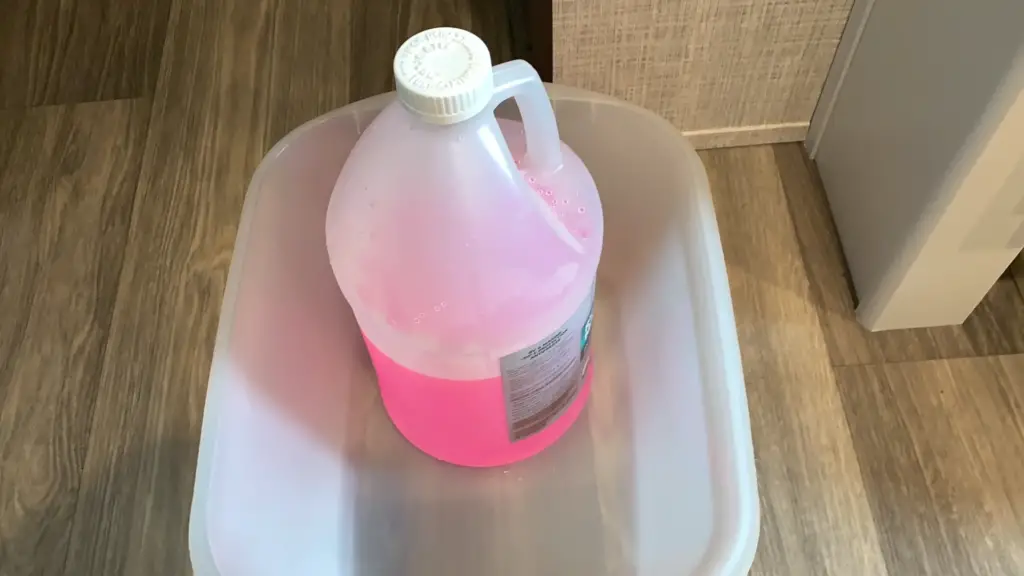
In short, pool antifreeze and RV antifreeze are not interchangeable. Pool antifreeze is more toxic and can be dangerous if ingested or inhaled.If you accidentally spill antifreeze in your pool, take quick action to drain all the water and contact poison control for more precise directions. [4]
FAQ
How do you winterize an inground pool with antifreeze?
There are a few different ways you can winterize your inground pool with antifreeze. One method is to add antifreeze to your pool’s skimmer basket. You can also add it directly to the water, but this can be more tricky and is not always effective.
If you choose to add antifreeze to your skimmer basket, start by turning off your pump and removing the skimmer basket. Next, pour in the desired amount of antifreeze and replace the basket. Finally, turn on the pump and let it run for a few minutes to circulate the antifreeze throughout the system.
Another method is to add antifreeze directly to the water. This can be done with a garden hose or a siphon. If you choose this method, make sure to add the antifreeze slowly so that it has time to mix evenly throughout the water.
Whichever method you choose, be sure to follow the manufacturer’s instructions carefully. Adding too much antifreeze can be just as dangerous as not adding enough.
What is propylene glycol antifreeze?
It is generally recognized as safe by the FDA, but it can be toxic if ingested in large quantities.Propylene glycol antifreeze has a number of advantages over traditional ethylene glycol antifreeze. It is less toxic and therefore safer to use, especially around children and pets. Propylene glycol also has a lower freezing point than ethylene glycol, so it can be used in colder climates.
If you are looking for an antifreeze that is safe and effective, propylene glycol antifreeze is a good option. Just be sure to follow the manufacturer’s instructions carefully to avoid any accidents. [5]
How many gallons of pool antifreeze should I use?
The amount of pool antifreeze you should use depends on the size of your pool. A general rule of thumb is to use one gallon of antifreeze for every 10 feet of pool surface area. So, if your pool is 20 feet by 40 feet, or 800 square feet, you would need eight gallons of antifreeze.
Whenever you add any new chemicals to your pool, be sure to always follow the manufacturer’s instructions. They will have the most accurate information about how much antifreeze you should use based on the size and type of pool you have.
In conclusion, there are a few things to keep in mind when using pool antifreeze. Be sure to use the right amount for your pool’s size, and always follow the manufacturer’s instructions. And remember, if you spill antifreeze in your pool, take immediate action to drain the water and contact poison control for further instructions. [6]
At what temperature should you winterize your pool?
The temperature at which you winterize your pool depends on the type of pool you have. For inground pools, the general rule of thumb is to winterize when the water temperature drops below 50 degrees Fahrenheit. For above-ground pools, you can typically wait until the water temperature gets down to 40 degrees Fahrenheit.
Of course, it’s always best to follow the manufacturer’s instructions when winterizing your pool. They will have the most accurate information about when to winterize based on the type of pool you have.
Assuming you have a traditional above ground pool, you’ll want to winterize it when the water temperature gets down to 40 degrees Fahrenheit. You can do this by adding antifreeze to your skimmer basket or directly to the water. Just be sure to follow the manufacturer’s instructions carefully. Adding too much antifreeze can be just as dangerous as not adding enough. Winterizing your pool is an important part of keeping it in good condition, so be sure to do it at the right time and follow all manufacturer’s instructions.
What happens if I don’t winterize my pool?
If you live in an area with freezing temperatures, your pool water will freeze and expand, causing the pool walls to crack. Even if your pool doesn’t freeze, the cold weather can damage the pump, filter, and other parts of the pool. Winterizing your pool protects it from the cold weather and keeps it in good working condition.
Also, if you don’t winterize your pool, you’ll have to deal with a lot of work in the spring when you want to start using it again. Winterizing your pool is a simple and easy process that only takes a few minutes. It’s worth the time and effort to do it so that you can enjoy your pool for many years to come.
There are two types of antifreeze that you can use to winterize your pool: pool antifreeze and RV antifreeze. Both types of antifreeze work by lowering the freezing point of water, but there are some important differences between them.
Pool antifreeze is made specifically for pools and is available in both liquid and granular form. Liquid pool antifreeze is easy to use, but it can be expensive. Granular pool antifreeze is less expensive, but it’s more difficult to use because you have to dissolve it in water before adding it to the pool.
RV antifreeze is made for recreational vehicles and is available in both liquid and gel form. RV antifreeze is less expensive than pool antifreeze and it’s easy to use, but it can leave a pink tint in your pool water.
Useful Video: How to Winterize a Pool: Closing a Pool for Beginners: Closing a Pool for Winter: Draining your Pool
Conclusion
So, what’s the difference? Pool antifreeze is made to protect your swimming pool from freezing over in cold weather. RV antifreeze, on the other hand, is designed to keep your RV’s water system from freezing and damaging the plumbing. If you live in a climate where the temperature regularly dips below 32 degrees Fahrenheit, it’s important to use RV antifreeze in your RV’s water system instead of pool antifreeze. Using the wrong kind of antifreeze can damage your pipes and cost you a lot of money for repairs. Make sure you are using the right kind of antifreeze every time by checking the label before you buy!
References
- https://thatcherpools.com/above-ground-pools/how-to-prepare-your-pool-for-winter-5-tips-every-pool-owner-must-know/
- https://todayshomeowner.com/homemade-swimming-pool-line-antifreeze/
- https://www.souththompsonrv.com/blog/2020/01/30/rv-antifreeze-faq
- https://www.ultramodern.com/swimming-pool-antifreeze/
- https://www.monarchchemicals.co.uk/Information/News-Events/700-/The-difference-between-Propylene-Glycol-and-Ethylene-Glycol-in-antifreeze
- https://www.ultramodern.com/swimming-pool-antifreeze/
- https://aquahavenspas.com/2018/01/12/what-happens-if-you-dont-winterize-pool/

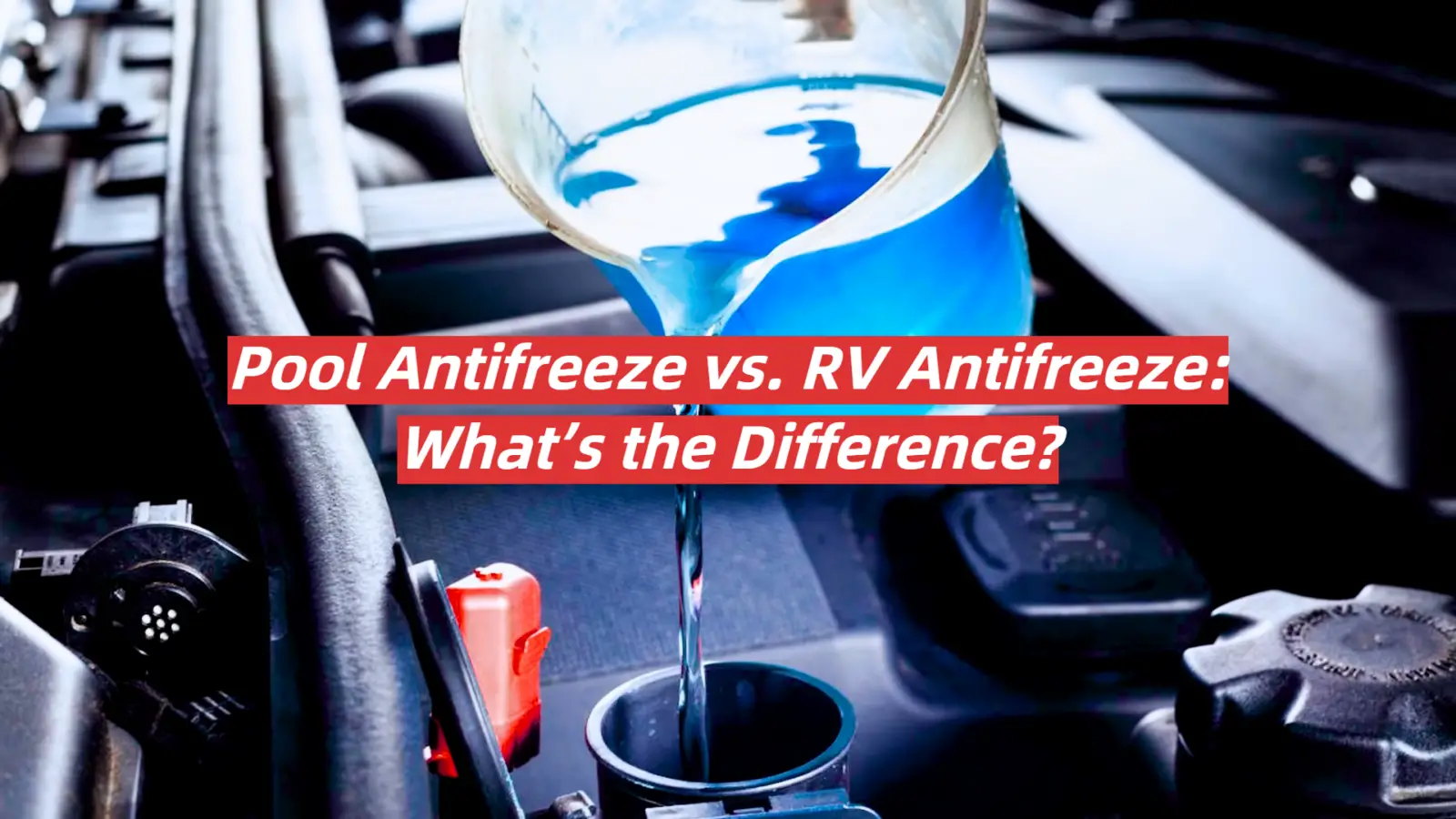
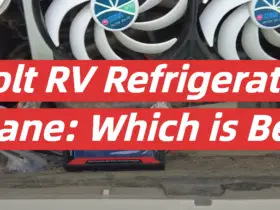



Leave a Reply